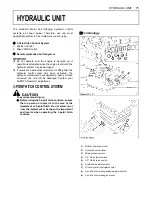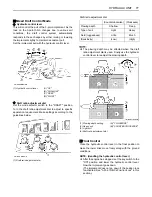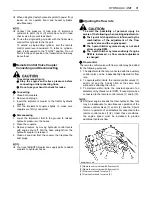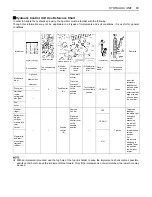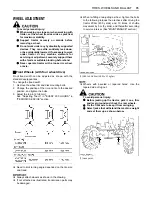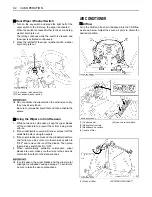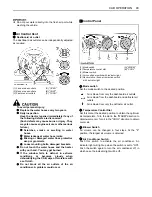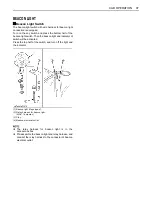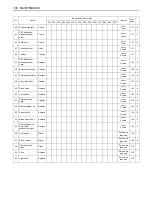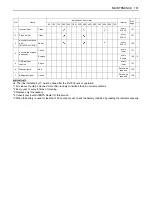
89
TIRES, WHEELS AND BALLAST
B
Rear Ballast
Add weight to rear wheels if needed to improve traction or
for stability. The amount of rear ballast should be matched
to job and the ballast should be removed when it is not
needed.
The weight should be added to the tractor in the form of
liquid ballast, rear wheel weights or a combination of both.
C
Rear Wheel Weights (option)
The rear wheel weights can be attached to the rear wheel.
See your implement operator's manual for required
number of weights or consult your local KUBOTA Dealer
to use.
A
Do not overload tires.
A
Add no more weight than indicated in chart.
C
Liquid Ballast in Rear Tires
Water and calcium chloride solution provides safe
economical ballast. Used properly, it will not damage tires,
tubes or rims. The addition of calcium chloride is
recommended to prevent the water from freezing. Use of
this method of weighting the wheels has the full approval
of the tire companies. See your tire dealer for this service.
Liquid weight per tire (75 Percent filled)
A
Do not fill tires with water or solution more than 75% of
full capacity (to the valve stem level).
(1) Rear wheel weights
Maximum weight
per wheel
[Cast iron disk]
72.5 kg x 2 pieces
[Steel disk]
72.5 kg x 3 pieces
Tire sizes
480/
70R34
540/
65R34
420/
85R34
520/
70R38
460/
85R38
Slush free at
-10
Solid at -30
[Approx. 1 kg
CaCl per 4 L of
water]
364 kg 394 kg 359 kg 522 kg 460 kg
Slush free at
-24
Solid at -47
[Approx. 1.5 kg
CaCl per 4 L of
water]
381 kg 414 kg 376 kg 548 kg 483 kg
Slush free at
-47
Solid at -52
[Approx. 2.25kg
CaCl per 4 L of
water]
405 kg 442 kg 400 kg 587 kg 514 kg
(1) Air
(2) Water
(A) Correct-75% Air compresses like a cushion
(B) Incorrect-100% Full Water can not be compressed
Summary of Contents for M100GX
Page 17: ... 7 SAFE OPERATION 7 DANGER WARNING AND CAUTION LABELS ...
Page 18: ...SAFE OPERATION 8 ...
Page 19: ... 9 SAFE OPERATION ...
Page 20: ...SAFE OPERATION 10 ...
Page 21: ... 11 SAFE OPERATION ...

